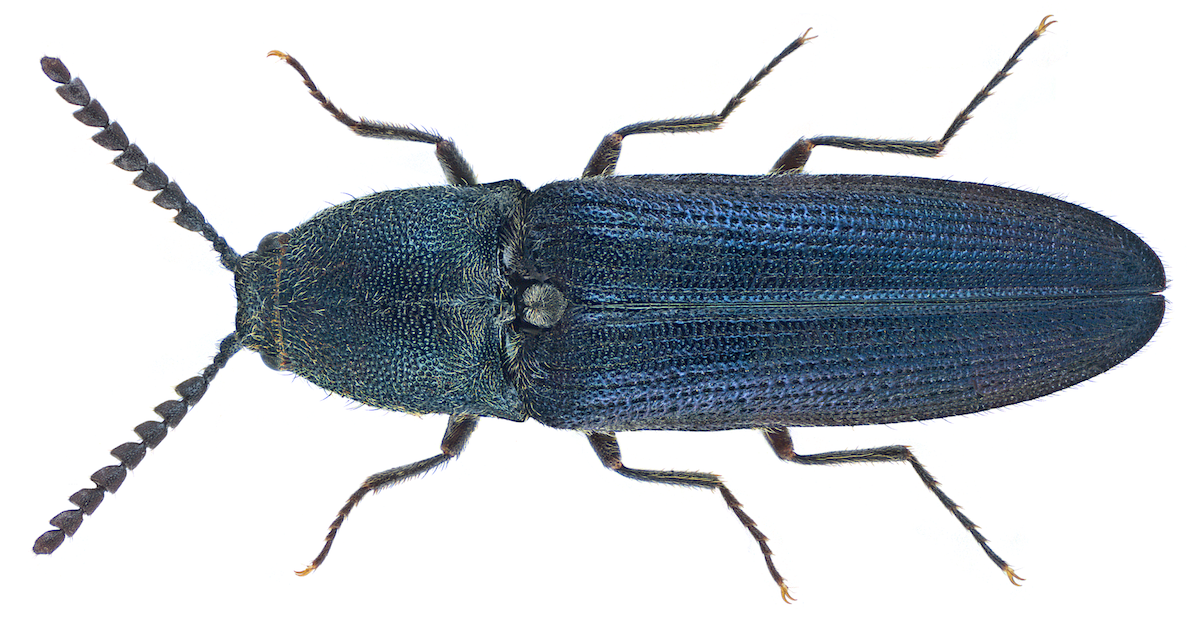- A new report by the International Union for the Conservation of Nature (IUCN) finds nearly 18 percent of saproxylic beetles are threatened with extinction in Europe. That number goes up to almost 22 percent for the EU as a whole.
- Of Europe’s threatened species, the 2018 report finds five are critically endangered, up from two in 2010. Of these, four are endemic, meaning they are found nowhere else in the world. In the EU overall, the IUCN lists seven species as critically endangered, up from three in 2010.
- Saproxylic beetles live in and eat dead and decaying wood, and play important ecological roles such as nutrient recycling, pollination and as an important food source for birds and other wildlife.
- The IUCN says that to stave of greater declines and help saproxylic beetles bounce back, land management should make sure each square kilometer of land contains a mix of trees of different ages, including standing and fallen dead trees.
Saproxylic beetles live in and eat dead and decaying wood, and play important ecological roles in nutrient recycling and pollination, and as an important food source for birds and other wildlife. But a new report finds many of Europe’s saproxylic beetles are in trouble, with nearly a fifth threatened with extinction.
The report was produced by the International Union for the Conservation of Nature (IUCN) finds nearly 18 percent of saproxylic beetles are threatened with extinction in Europe. That number goes up to almost 22 percent for EU countries.
The number of threatened beetle species has increased significantly since the IUCN’s last evaluation in 2010, which found 11 percent were threatened in Europe and 14 percent were threatened in the EU.
The IUCN’s Red List includes three threatened categories: Vulnerable, Endangered and Critically Endangered. This latter category is the last rung before regional extinction, and the 2018 report shows it had proportionally the most growth since 2010.
Of Europe’s threatened species, the 2018 report finds five are critically endangered, up from two in 2010. Of these five, four are endemic, meaning they are found nowhere else in the world. In the EU, the IUCN lists seven species as critically endangered, up from three in 2010.

The 2018 report also highlights that around a quarter of saproxylic beetle species could not be assessed because there is currently not enough data on them to do so. It estimates that if these species were able to be included in the assessment, then Europe’s 18 percent threatened rate could be as low as 13.5 percent – or as high as 40 percent.
Why are these beetles declining? According to the IUCN, it’s because Europe’s trees are disappearing. The report names logging, wood harvesting and other types of tree loss as “by far the greatest threats to both threatened and non-threatened saproxylic beetles, affecting more than half the species, including 76 threatened species.”
The report also states urbanization, tourism development and an increasing frequency in wildfires are big drivers of beetle habitat loss.
Beetles aren’t the only group of insects in trouble in Europe. A 2017 study found Germany’s flying insect abundance dropped more than 75 percent over 30 years. Scientists are still trying to figure out why, but suspect agricultural intensification may be to blame.

The IUCN says that to stave of greater declines and help saproxylic beetles bounce back, land management should make sure each square kilometer of land contains a mix of trees of different ages, including standing and fallen dead trees. The report states conservation priority should be given to species with small, isolated populations, and ecological corridors should be created to ensure populations of the same species are able to exchange genes.
The report includes a number of policy recommendations, including IUCN assessment of data deficient species, regulations aimed at making sure European landscapes maintain enough living and dead trees, and more stringent measures for combatting illegal logging. It also urges the EU’s Common Agricultural Policy promote more effective management of wood pasture habitats that harbor old trees.
Citation:
Cálix, M., Alexander, K.N.A., Nieto, A., Dodelin, B., Soldati, F., Telnov, D., Vazquez-Albalate, X., Aleksandrowicz, O., Audisio, P., Istrate, P., Jansson, N., Legakis, A., Liberto, A., Makris, C., Merkl, O., Mugerwa Pettersson, R., Schlaghamersky, J., Bologna, M.A., Brustel, H., Buse, J., Novák, V. and Purchart, L. 2018. European Red List of Saproxylic Beetles. Brussels, Belgium: IUCN
FEEDBACK: Use this form to send a message to the editor of this post. If you want to post a public comment, you can do that at the bottom of the page.













